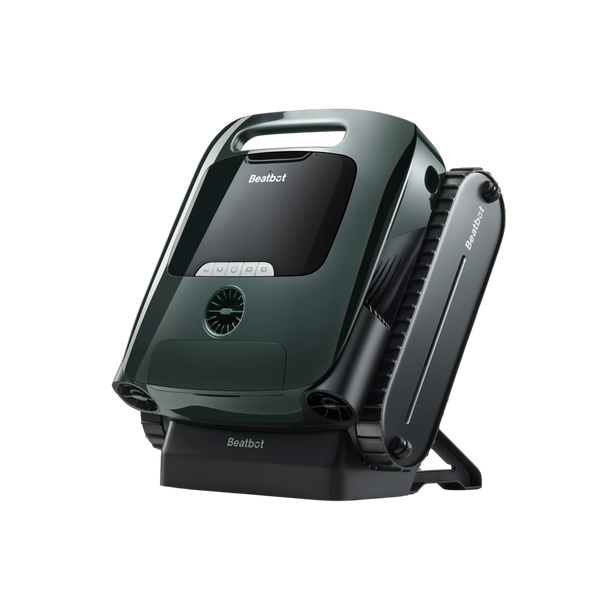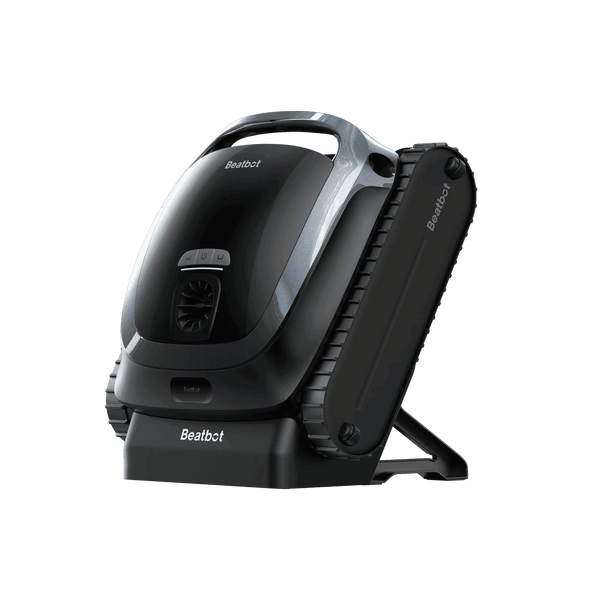An Easy Guide to Vacuum Your Pool
Introduction:
Keeping your swimming pool sparkling clean through regular vacuuming is a brilliant move to preserve its pristine charm, free from any trace of dirt and debris. While it may demand a spot of hard work, the rewards are well worth the sweat: It slashes the struggle with algae, maintains your pool water in perfect balance, and enhances the potency of your pool chemicals. Ready to embrace vacuuming as a vital part of your in-ground or above-ground pool's care routine? It's as simple as pie. Just arm yourself with a few indispensable tools and adopt a skillful vacuuming technique.
Table of contents
The Essentials of Pool Care and Maintenance
Owning a pool is a luxury, but it also requires commitment to keep it safe, clean, and inviting. Understanding the basics of pool care and maintenance is crucial for any pool owner. Let's dive into the fundamentals:
1. Regular Cleaning
- Skimming and Vacuuming: Skim the surface of your pool daily to remove leaves, insects, and debris. Vacuum the pool weekly to tackle the dirt that settles on the bottom.
- Brushing: Brush the walls and tiles to prevent algae build-up. Focus on corners and steps, where dirt tends to accumulate.
2. Water Chemistry Balance
- pH Levels: Maintain a pH level between 7.2 and 7.8. This range ensures the water is comfortable for swimmers and helps sanitizers work effectively.
- Sanitization: Use chlorine or other sanitizers to keep your pool free from bacteria and algae. Test sanitizer levels frequently to ensure they're within the recommended range.
3. Filtration System Maintenance
- Filter Cleaning: Clean or backwash your filter regularly to maintain efficient operation. Filters come in various types, including sand, cartridge, and diatomaceous earth (DE).
- Pump Operation: Run your pool pump for about 8-12 hours daily to facilitate effective circulation and filtration.
4. Water Level Management
- Consistent Levels: Keep the water level halfway up the skimmer opening. Evaporation and splash-out can lead to low levels, so regularly check and refill as needed.
5. Seasonal Considerations
- Winterizing: Properly close your pool before winter. Lower the water level, add winter chemicals, and cover the pool to protect it from freezing temperatures.
- Spring Opening: When reopening, clean and inspect your pool thoroughly. Shock the pool with a higher dose of chlorine to eliminate any contaminants.
Tips for Effective Pool Maintenance
- Invest in a Quality Pool Cover: A cover can help reduce debris, chemicals, and maintenance time.
- Regular Inspections: Periodically inspect your pool for leaks or noticeable damage that might require professional attention.
- Professional Help: Consider hiring a professional for annual inspections to ensure your equipment is functioning properly.
By adhering to these maintenance basics, you'll ensure your pool remains clean, safe, and operational, providing endless enjoyment throughout the swimming season.

Essential Pool Vacuuming Tools for a Sparkling Clean
Ensuring your pool remains pristine involves utilizing a range of tools that can greatly facilitate and enhance the vacuuming process. Here are the must-haves, organized to reflect their importance and usage:
Pool Skimmer Net: The Preliminary Step
Before diving into the vacuuming task, a pool skimmer net is your first line of defense. This tool efficiently scoops up floating debris from the water's surface, setting the stage for a cleaner and smoother vacuuming process.
- Manual & Automatic Pool Vacuums: Choosing the Right One Manual Vacuums: Fit for targeted cleaning, these vacuums require manual steering across the pool. Equipped with a vacuum head, telescoping pole, and hose, they offer precision and are ideal for picking up small particles.
- Automatic Vacuums: Ideal for routine maintenance, these vacuums operate autonomously. Connected to your pool’s filtration system or powered by a separate pump, they excel at covering larger areas with minimal human intervention.
Pool Brush: Loosening Dirt and Algae
Scrubbing the pool's walls and floors with a brush is crucial. This action helps loosen dirt and algae, making it easier for the vacuum to pick up and remove during the cleaning process.
Hose:Ensuring Optimal Water Flow
A clean and intact vacuum hose is vital for efficient cleaning. With a typical diameter between 1.5 and 2 inches, it ensures optimal water flow, ensuring that the vacuum performs at its best.
Telescoping Pole: Reaching Every Corner
A sturdy telescoping pole is necessary for attaching manual vacuum heads and brushes. It enables you to reach every corner of the pool, ensuring no spot is left uncleaned.By arming yourself with these tools and supplies, you'll enjoy a seamless and efficient vacuuming experience。
How to Vacuum: A Step-By-Step Guide
With all your equipment assembled and ready, it's time to dive into the task of manually vacuuming your above-ground or inground swimming pool. Here's a step-by-step guide to help you through the process:
Step 1: Putting Together Your Pool Vacuum
Assemble your pool vacuum quickly and effortlessly. Simply snap the vacuum head onto your telescoping pole. Ensure a secure fit for efficient cleaning.
Step 2: Connecting the Hose
Attach one end of the hose to the vacuum head and the other end to the skimmer, using the vacuum plate. Don't forget to remove the skimmer basket first! This setup ensures that debris is directed away from the filter system.
Step 3: Adjusting the Filter Valve Setting
For light debris removal, keep your multiport valve filter set to “Filter.” For heavier cleaning tasks, switch your filter system to the “Waste” setting. This setting directs water and debris down the drain, bypassing the filter to prevent clogging.
Step 4: Initiating the Vacuuming Process
Begin vacuuming your pool, moving the vacuum head in slow, linear passes. Moving too quickly can stir up dirt without effectively removing it. If your pool is particularly dirty, you may need to pause and empty the pump strainer. Repeat this process until all debris is removed from the pool floor.
Step 5: Disconnecting and Finalizing the Cleanup
Once your pool is sparkling clean, disconnect the vacuum head and hose. Don't forget to clear out the skimmer basket. If you changed your filter pump settings, revert them to their original position. If you have a sand or DE filter, perform a quick backwash. Finally, attach a brush to your telescoping pole and give the pool floor and sides a thorough scrubbing for a pristine finish.With these steps, you'll ensure your pool is clean, inviting, and ready for enjoyable swimming sessions.
Understanding Pool Water Filtration and Chemical Treatments
How Pool Water Filtration Works
At the heart of maintaining a clean and healthy pool is an efficient water filtration system. The filtration process is designed to remove debris, contaminants, and impurities from your pool water, ensuring that it remains crystal clear and safe for swimming. Here's a basic overview of how it works:
Pump Action : The process begins with the pool pump, which draws water from the pool through skimmers and drains, circulating it into the filtration system.
-
Filtering Process : Water passes through one of several types of filters:
- Sand Filters : Water is pushed through sand, and debris is trapped. Clean water returns to the pool.
- Cartridge Filters : A cartridge captures particles, removing even very small debris.
- Diatomaceous Earth (DE) Filters : These use a fine powder to coat the filter grids, capturing microscopic particles for ultra-clear water.
Return : Filtered water is returned to the pool, completing the cycle.
Regular maintenance of your filtration system is crucial. This includes backwashing sand and DE filters and cleaning or replacing cartridges as needed.
Essential Chemical Treatments
Filtration alone can't handle all pool water problems. Chemical treatments are necessary to keep water free of bacteria and algae while maintaining balanced pH levels.
Key Chemicals Used for Pool Water Treatment:
Chlorine : The most common sanitizer, chlorine kills bacteria, controls algae, and oxidizes organic material. Available in different forms such as liquid, granules, or tablets.
Bromine : Similar to chlorine but less irritating on the skin and used mostly in spas or indoor pools.
pH Balancers : Proper pH levels (ideally between 7.2-7.6) ensure swimmer comfort, protect pool equipment, and optimize chlorine effectiveness.
Algaecides : Used to prevent and treat algae blooms, keeping the pool's surface and walls clean.
Shock Treatments : Occasional high doses of chlorine or non-chlorine shock oxidizers clean up contaminants, clear cloudy water, and refresh chlorine effectiveness.
Stabilizers : Cyanuric acid helps prevent chlorine breakdown by the sun, maintaining its levels in outdoor pools.
Keeping up with regular testing of your pool's water allows you to make these adjustments accurately and promptly.
Final Tips for Pool Maintenance
Ensure periodic monitoring and adjustment of chemical levels to align with manufacturer guidelines or a pool professional's advice. Well-maintained filtration and chemical treatments are key to prolonged equipment life and an enjoyable swimming experience.
A More Effortless Solution: Robotic Pool Cleaner
While manual vacuum cleaning is certainly effective, frequent cleaning is necessary to ensure consistent cleanliness. While one cleaning session might not be too taxing, if you're the type of person who feels their legs give out just hearing the word "housework," I highly recommend the Beatbot AquaSense 2 Pro.
Why the Beatbot AquaSense Pro Should Be Your Ultimate Pool Vacuum ing Companion?
This industry-leading pool vacuum offers a comprehensive coverage cleaning. Its unique, patented technology enables it to effortlessly clean the water surface, leaving no corner untouched. It scans your pool and designs the most suitable cleaning path based on its shape and size, making it perfect for pools ranging from 0.5 to 3 meters in depth! Vacuuming has never been easier—just drop the AquaSense Pro into the water, wait for it to finish, and retrieve it after it automatically docks. That's all you need to do!
Relative Blogs
About the author



















